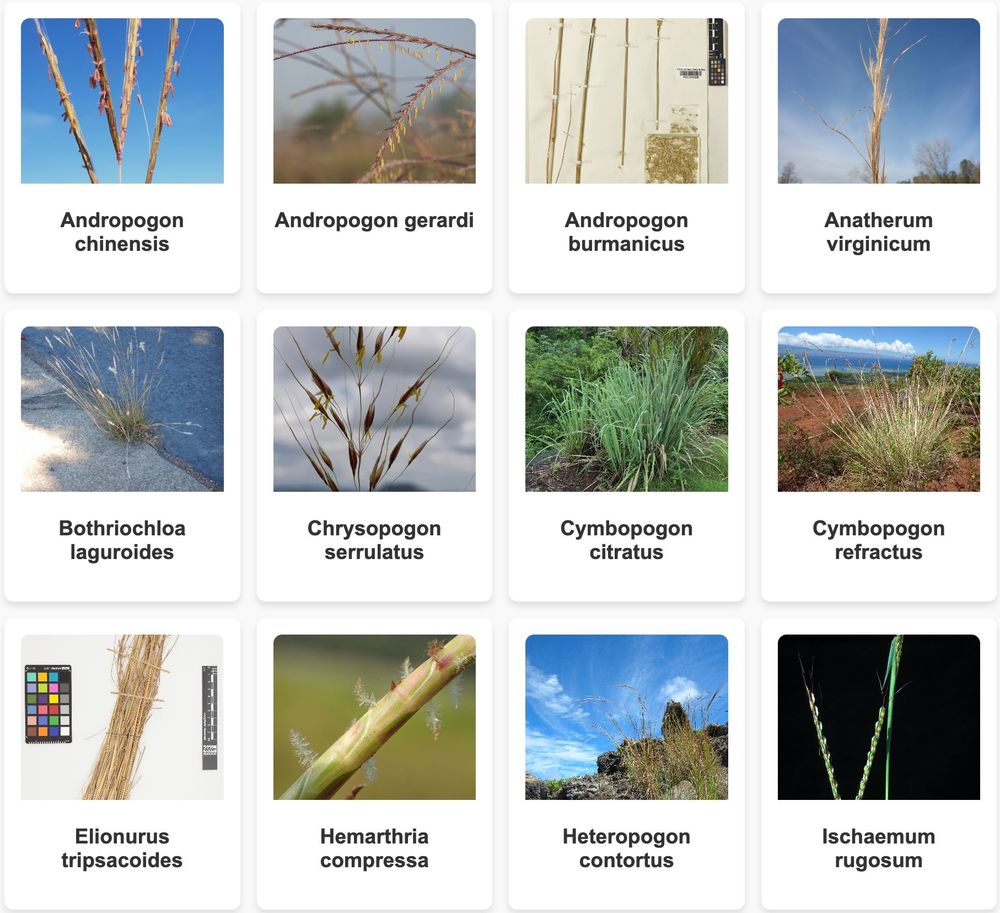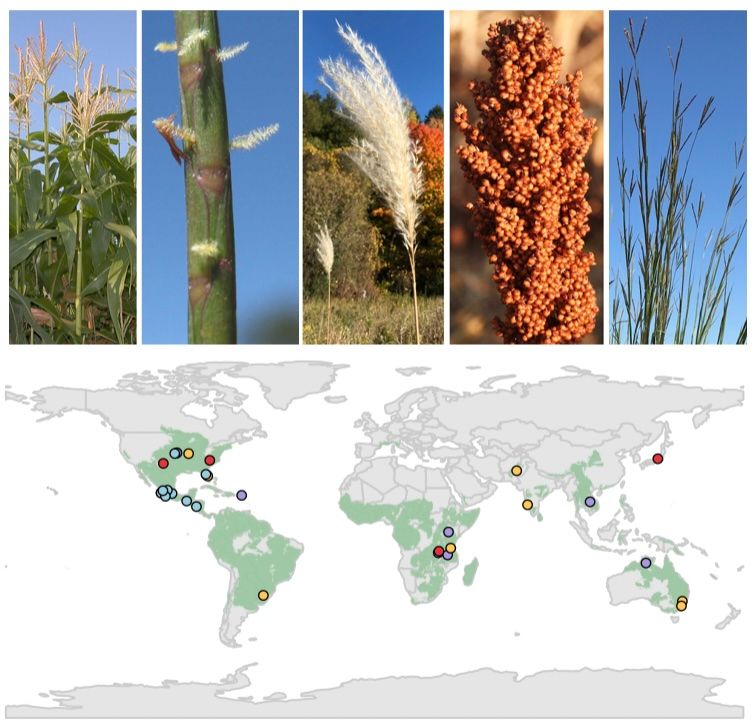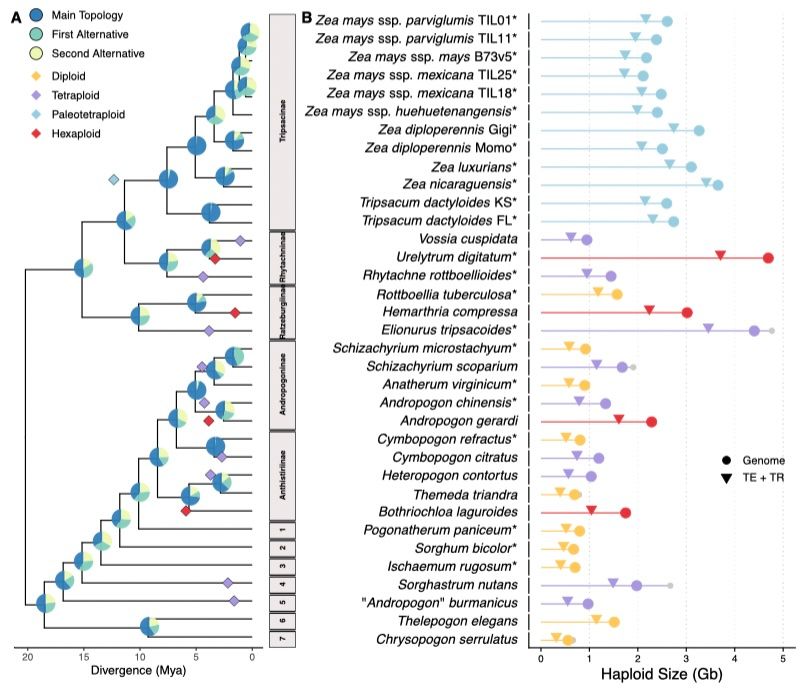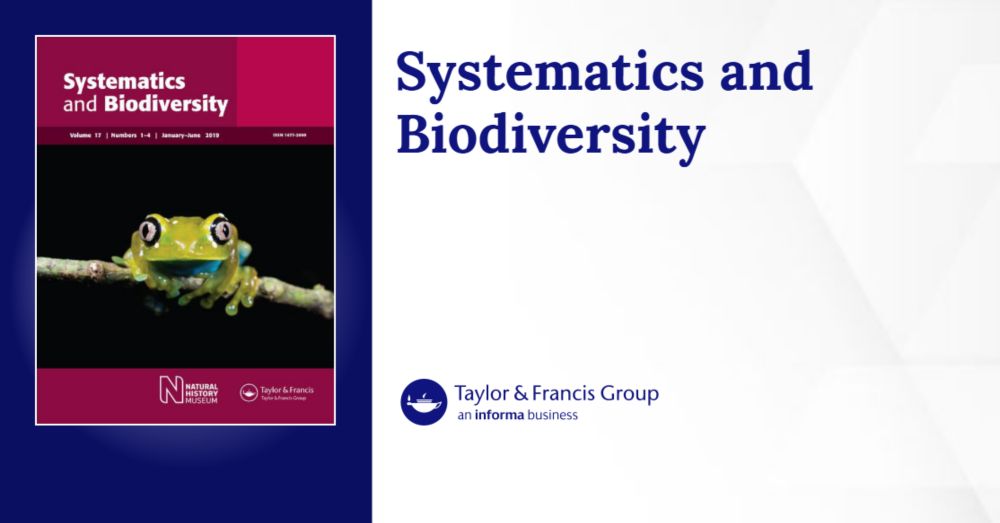Was so great to have the assembly of a member of sister tribe Paspaleae to use as an outgroup. Thanks!
31.01.2025 23:41 — 👍 1 🔁 0 💬 0 📌 0

A screenshot of the linked website, with nine Andropogoneae species (Andropogon chinensis, Andropogon gerardi, Andropogon burmanicus, Anatherum virginicum, Bothriochloa laguroides, Chrysopogon serrulatus, Cymbopogon citratus, Cymbopogon refractus, Elionurus tripsacoides, Hemarthria compressa, Heteropogon contortus, and Ischaemum rugosum).
A monumental effort -- huge thanks to everybody involved! And see what individual plants and their genomes look like here: mcstitzer.github.io/panand_assemblies
27.01.2025 21:33 — 👍 7 🔁 3 💬 1 📌 0
We're not entirely sure why Andropogoneae resist the commonly observed patterns that follow polyploidy, but check out the preprint for our thoughts!
27.01.2025 21:33 — 👍 1 🔁 0 💬 1 📌 0
Instead, we see a surprising lack of genome evolution in Andropogoneae polyploids: they retain almost all chromosomes, keep most genes, and their TEs only sometimes expand.
27.01.2025 21:33 — 👍 0 🔁 0 💬 1 📌 0
We uncovered 14 independent origins of polyploidy in these grasses, and expected to see patterns similar to those observed in maize: a reduction in chromosome number, the loss of duplicate genes, and bursts of transposable element activity.
27.01.2025 21:33 — 👍 2 🔁 0 💬 1 📌 0

On top, five Andropogoneae grass species, from left to right Zea mays subsp. mays, Hemarthria uncinata, Miscanthus sinensis, Sorghum bicolor, Andropogon gerardi. On bottom, a map of the world, with collection sites of Andropogoneae grasses in points. A green background shows the distribution of Andropogoneae grasses throughout tropical and temperate latitudes

On left, a phylogeny of Andropogoneae species, with 14 independent polyploidy origins noted. On right, genome size and repeat content of each assembly. Across all assemblies, average assembly size is 1.9 Gb, and average repeat size is 1.5 Gb.
New preprint featuring my favorite maize-relatives, the Andropogoneae! We sequenced the genomes of 27 species, including lemongrass, kangaroo grass, little and big bluestem, and more -- key species that shape grasslands and prairies worldwide. www.biorxiv.org/content/10.1...
27.01.2025 21:33 — 👍 51 🔁 30 💬 1 📌 0



